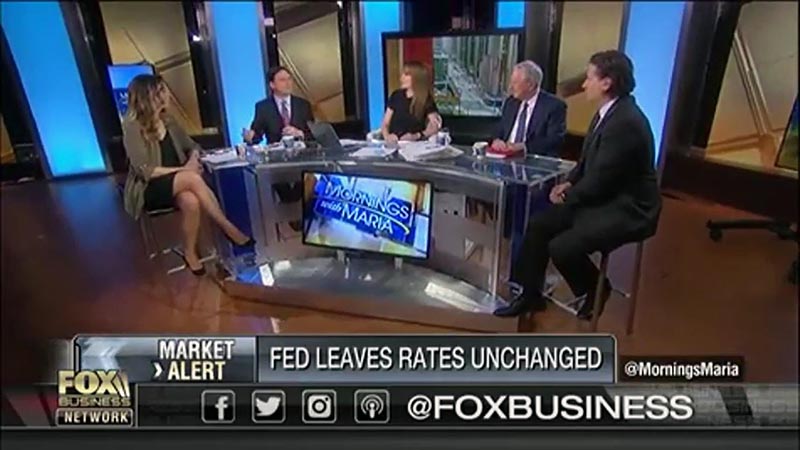The Week on Wall Street
Stocks rose last week, with help from two developments: the announcement of further U.S.-China trade talks as well as August hiring and manufacturing numbers that seemed to bolster the argument for a rate cut by the Federal Reserve.
The broad U.S. equity market, as represented by the S&P 500, added 1.79% during a 4-day trading week. The Dow Jones Industrial Average improved 1.49%; the Nasdaq Composite, 1.76%. Foreign shares tracked by the MSCI EAFE index gained 1.69%.1,2,3
Trade Talks Poised to Restart
Trade representatives from the U.S. and China are planning to head back to the negotiating table early next month. This news came Thursday from China’s ministry of commerce, which confirmed a verbal agreement among Secretary of the Treasury Steven Mnuchin, U.S. Trade Representative Robert Lighthizer, and Chinese Vice Premier Liu He.
Formal trade discussions between the U.S. and China last happened in July. China has said that it wants punitive U.S. tariffs on its products removed in the event of a deal.4
Weaker Hiring & Manufacturing Data
Payrolls expanded with just 130,000 net new jobs in August, according to the Department of Labor; 25,000 were temp jobs linked to the federal government’s 2020 Census. The main jobless rate stayed at 3.7%. The U-6 rate, which measures both unemployment and underemployment, rose 0.2% to 7.2%.
A key gauge of U.S. factory activity, the Institute for Supply Management’s manufacturing purchasing manager index, fell to 49.1 in August. A number below 50 indicates factory sector contraction. Some investors took these hiring and manufacturing reports as hints of a slowing economy, one which the Federal Reserve could potentially try to stimulate with an interest rate cut.5,6
What’s Ahead
August inflation data arrives this week, and if looks especially mild, it may amount to another suggestion that the Fed should ease. The European Central Bank concludes a meeting on Thursday, and Fed officials will certainly pay attention to its latest policy statement.7
Catch me on Fox Business this Friday, on Mornings with Maria

My notes for last week for Fox Business, and thoughts about the markets:
So, it’s back to following the bouncy ball with China. I don’t think we’ll get all of the seven things Navarro wanted in the immediate future, but I do believe we will get a ‘partial fill’. Some reduction in tariffs would be considered a win but getting deals on intellectual property and other items on the ‘wish list’ sought after by President Trump and other officials will be difficult and require much more effort and time. If it is a short term win, we reduce tariffs on both sides and markets will feel good about that but the stone is cast in this administration advancing the ball on IP protections and putting a mechanism in place for compliance. The coming election may dictate easier to complete items moving forward for the feel good moment however but make no mistake, this administration is not going to let up especially if there is a 2nd term.
The playbook that has worked well is focusing on those companies that have beat and raised guidance, including Salesforce and Microsoft. We still like the large cap growth category, specifically technology, and this would be the ETF XLK. We would be buying on the dips and would not be buying on the major moves up because of ongoing China/US tensions. Also we are staying away from value as we still believe those are ‘value traps’. Those companies that trade at multiple of 12 and look cheap are then trading at multiples of 8, 6 months later. We would rather go where the pin action is and that is large cap growth where investors are willing to pay up for positive company performance.
This choppiness still seems to be around us in the higher range, we advise our clients to put in some bids below the market and then perhaps go off to lunch, and with a tweet or two you may get filled. Conversely, put some sell offers out above the market and with this stretched volatility we have it can be used in our favor. There are a few choices to make volatility a friend or foe and of course we prefer to make it a friend.
As far as recession talk, we think that is way overblown, and of course we believe it is very politicized. It is hard to have a recession when you have an unemployment rate below 3.8%. and the new jobs numbers blowing away estimates like we saw today. We also think that the Fed will reduce rates a quarter of a point which will help steepen the yield curve, something everyone has been concerned about in pointing towards a recession.
The latest ISM number which represents manufacturing was weak, however it still correlates with positive GDP around 1.8%. I do believe there will be some major asset allocation shifts, with the 10 year currently at 1.45% and ETF’s like TLT and IEF which are moving parabolic, similar to that of the dot com days. I do believe in a reversion to the mean, therefore there is a good case for this reallocation from treasury bonds to stocks. After all, we do believe lower interest rates are helpful, because with the 10-year treasury at 1.45% and the dividend on the S&P 500 at 2% historically this is a good as a low interest rate offer little competition to stocks.


